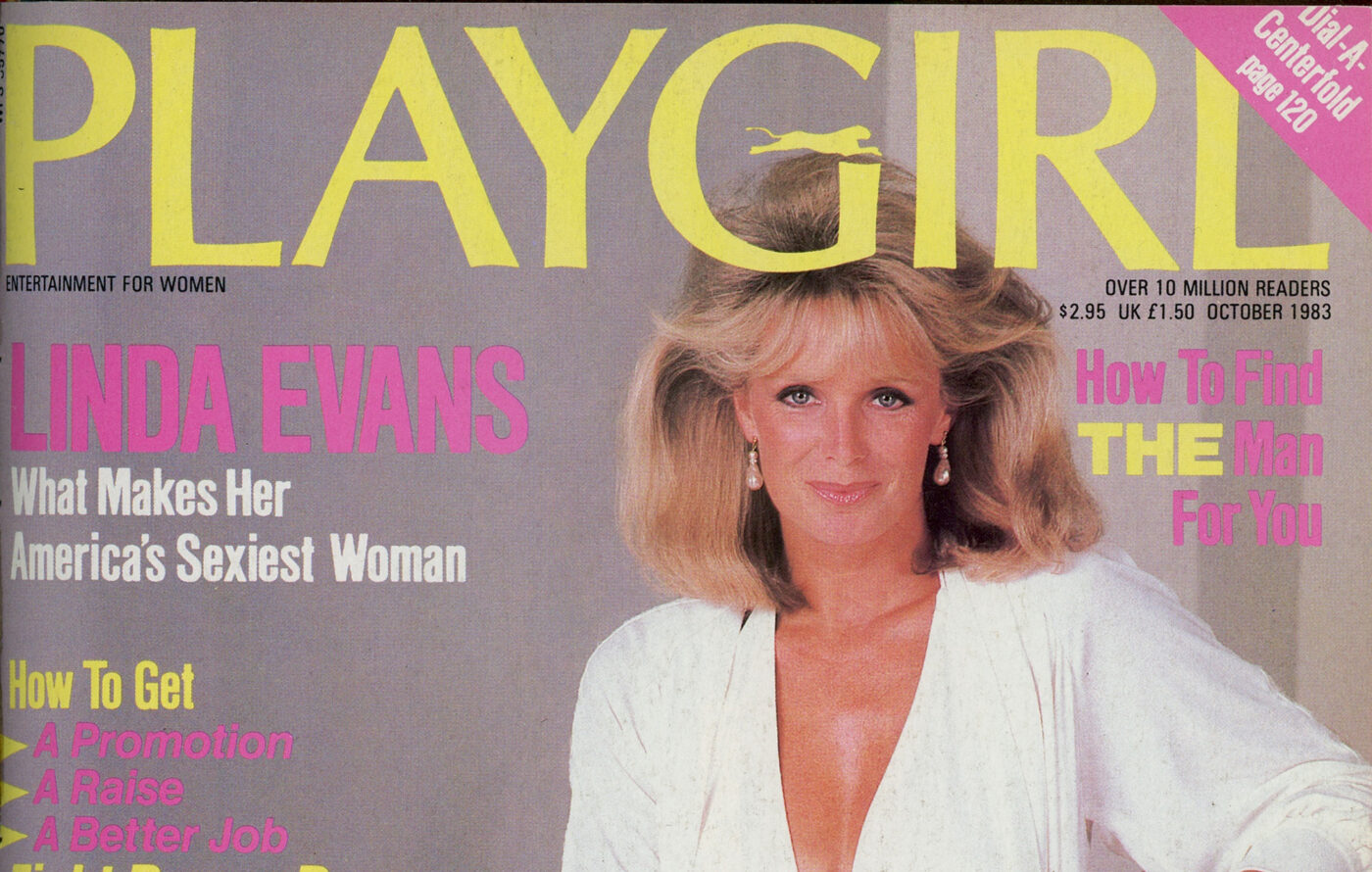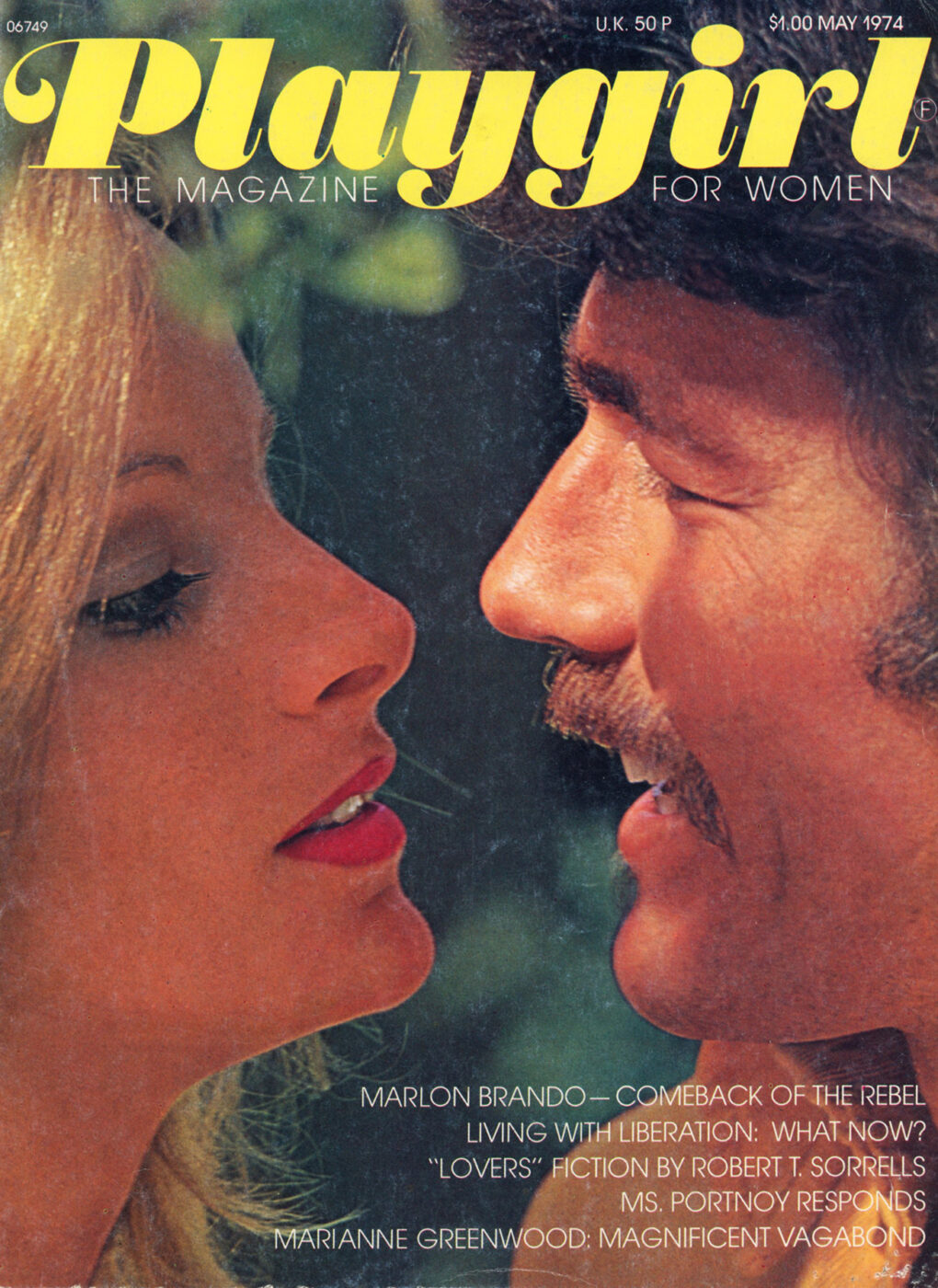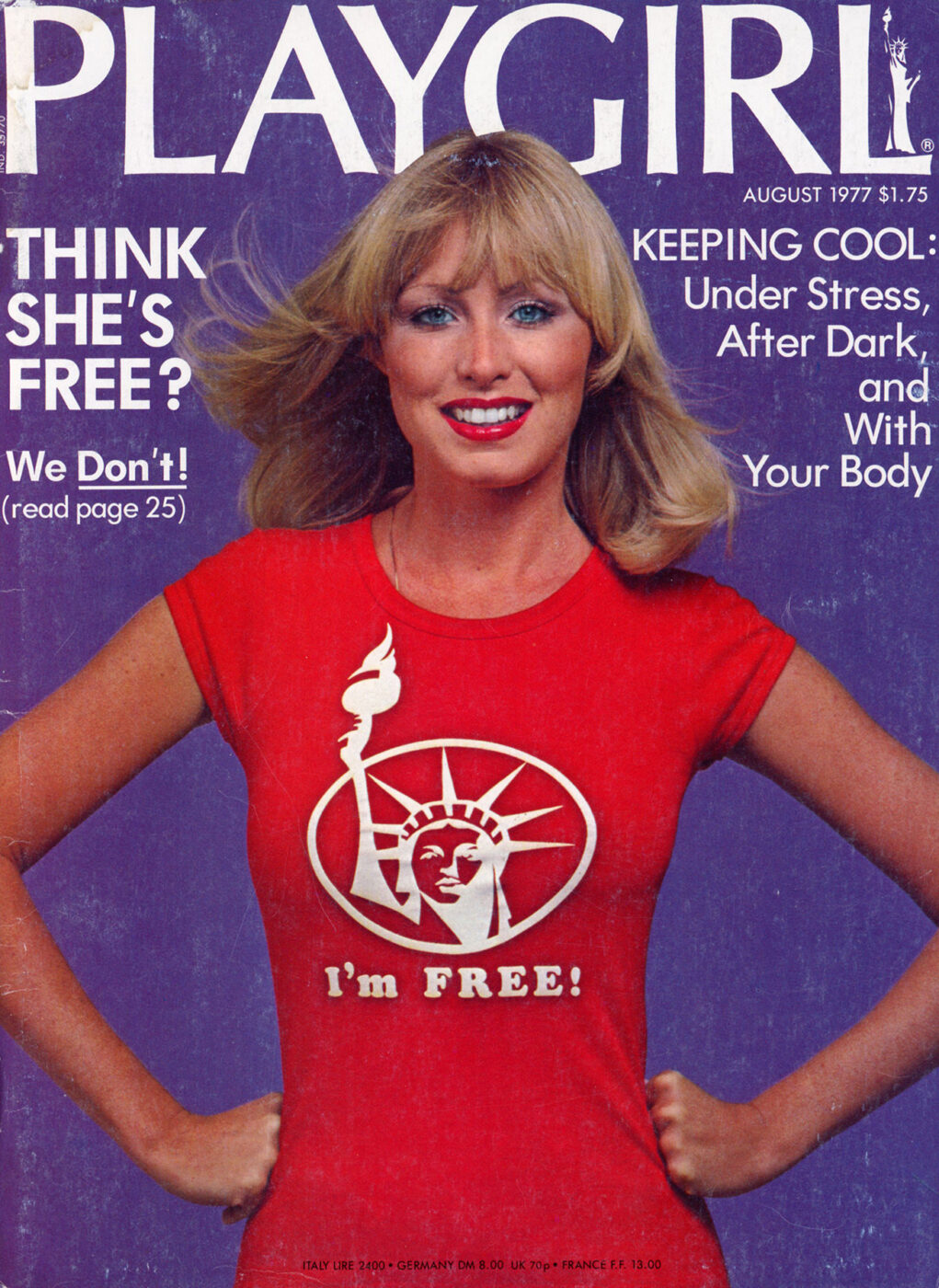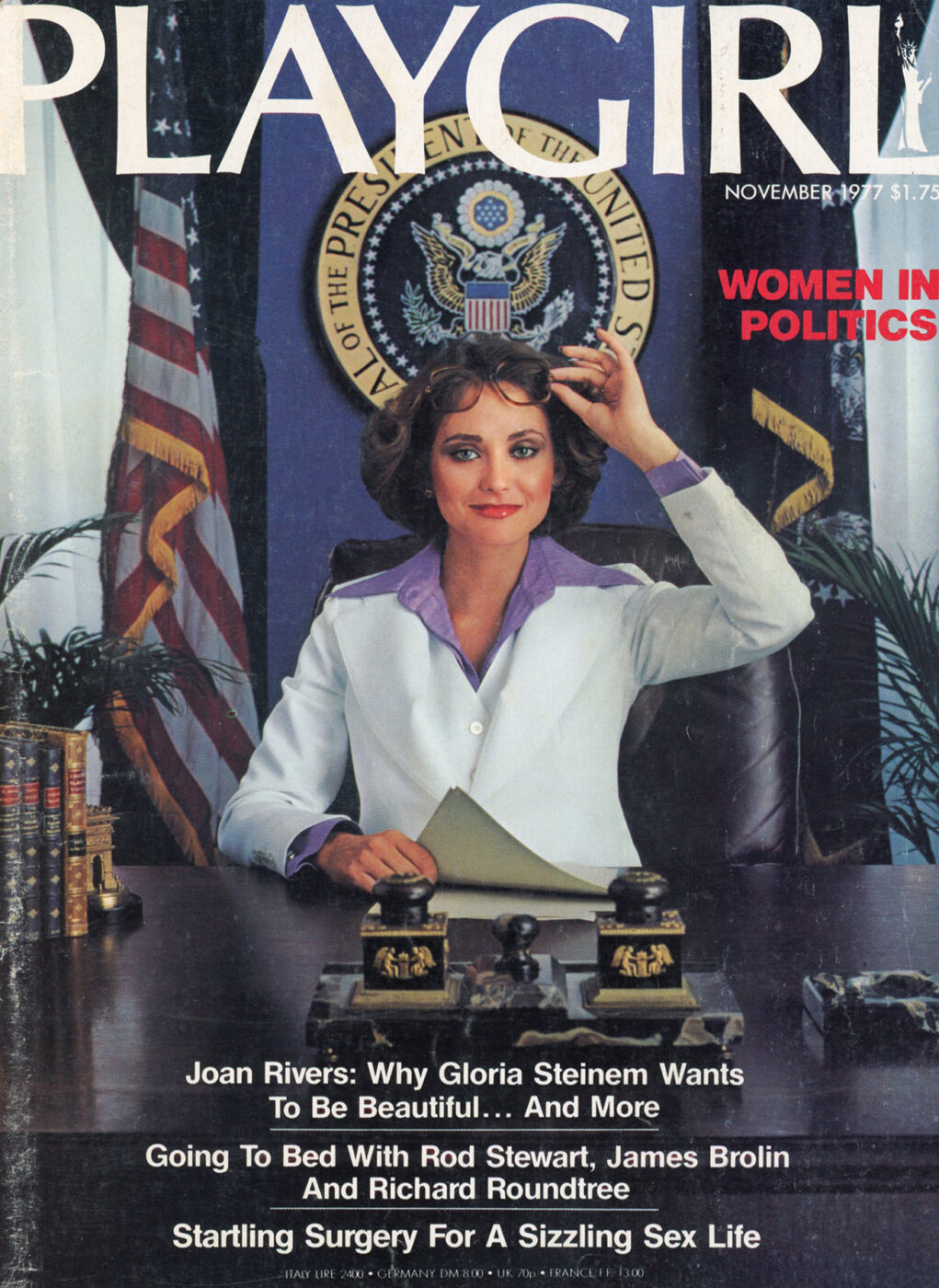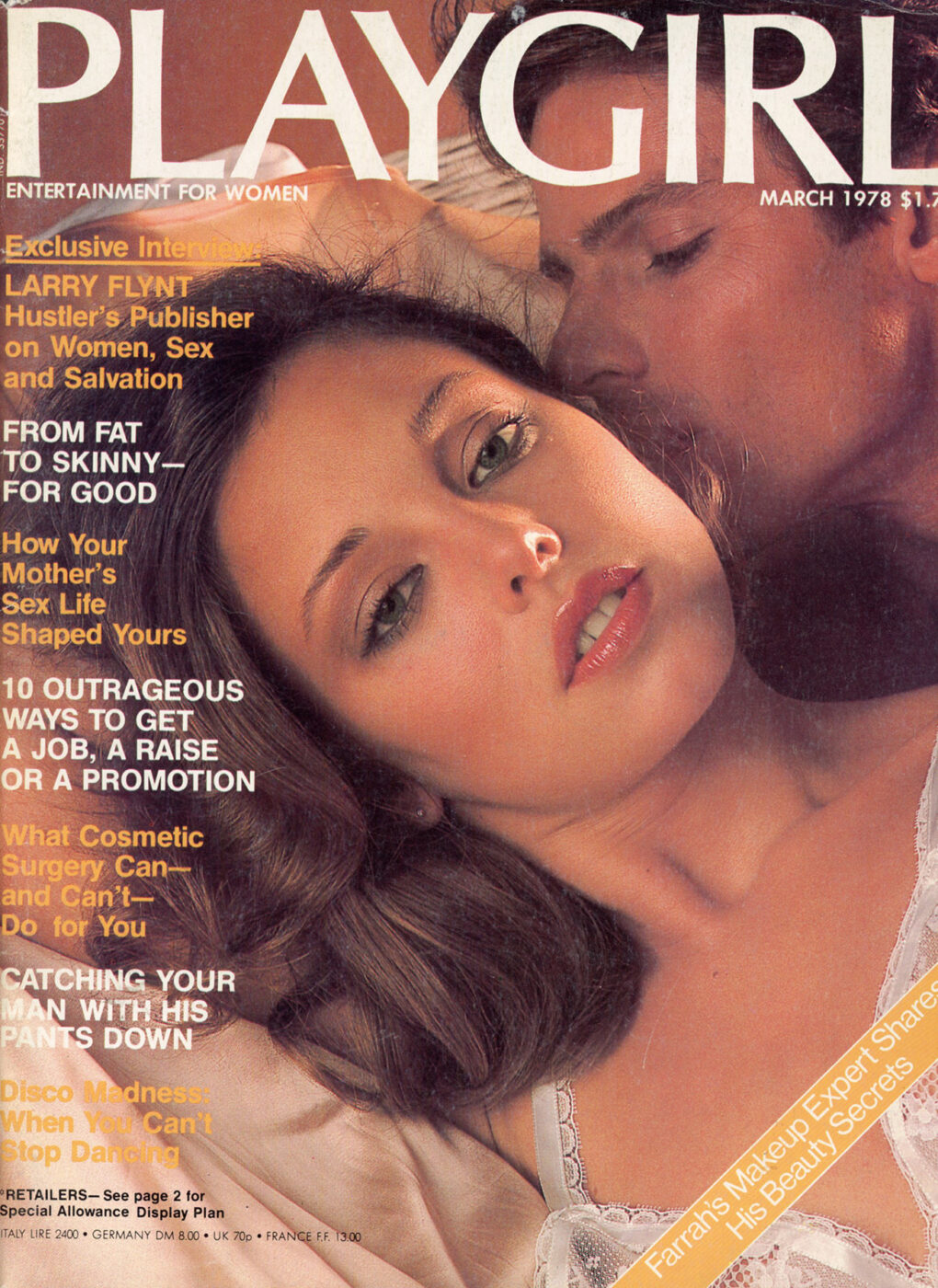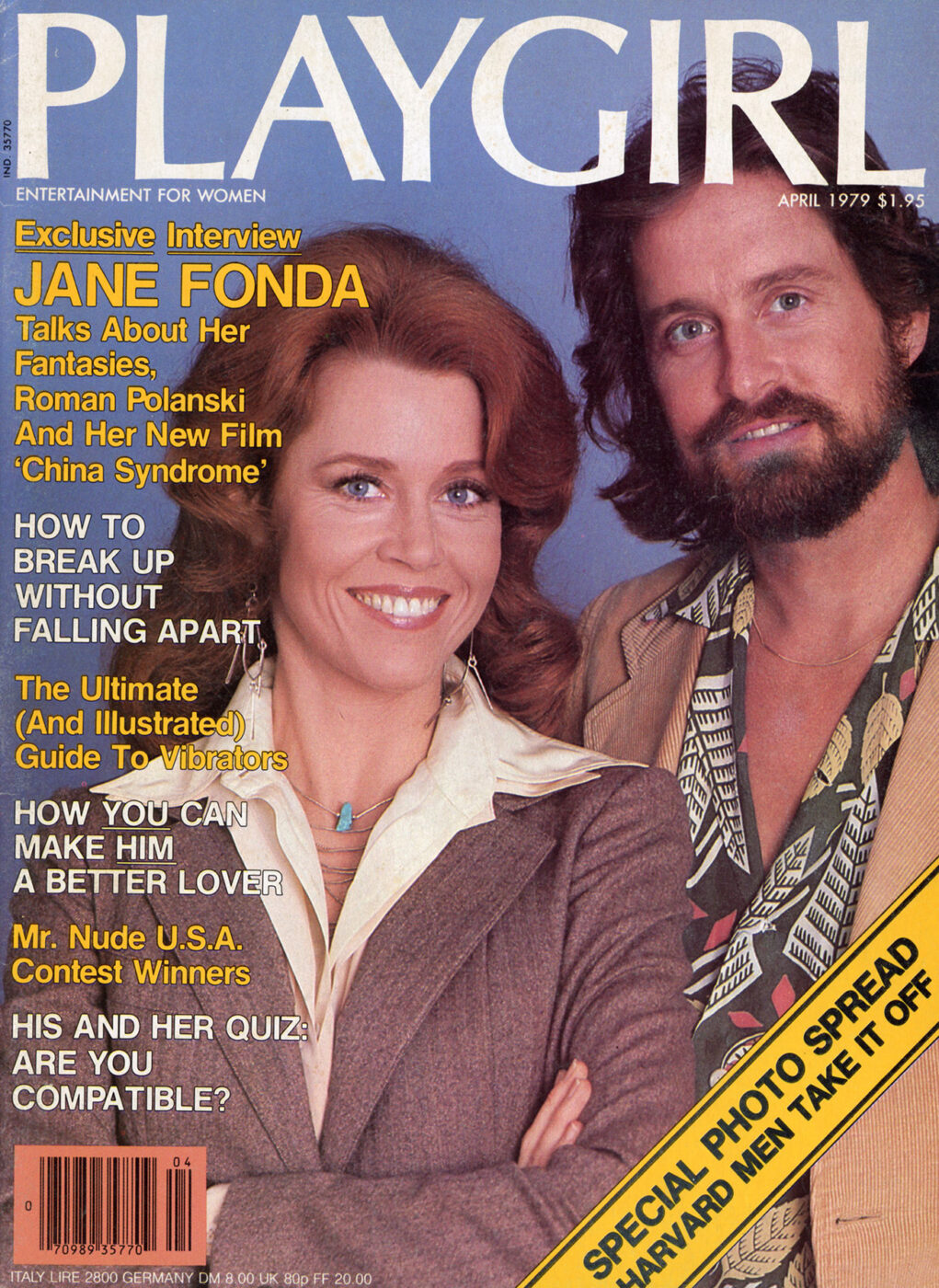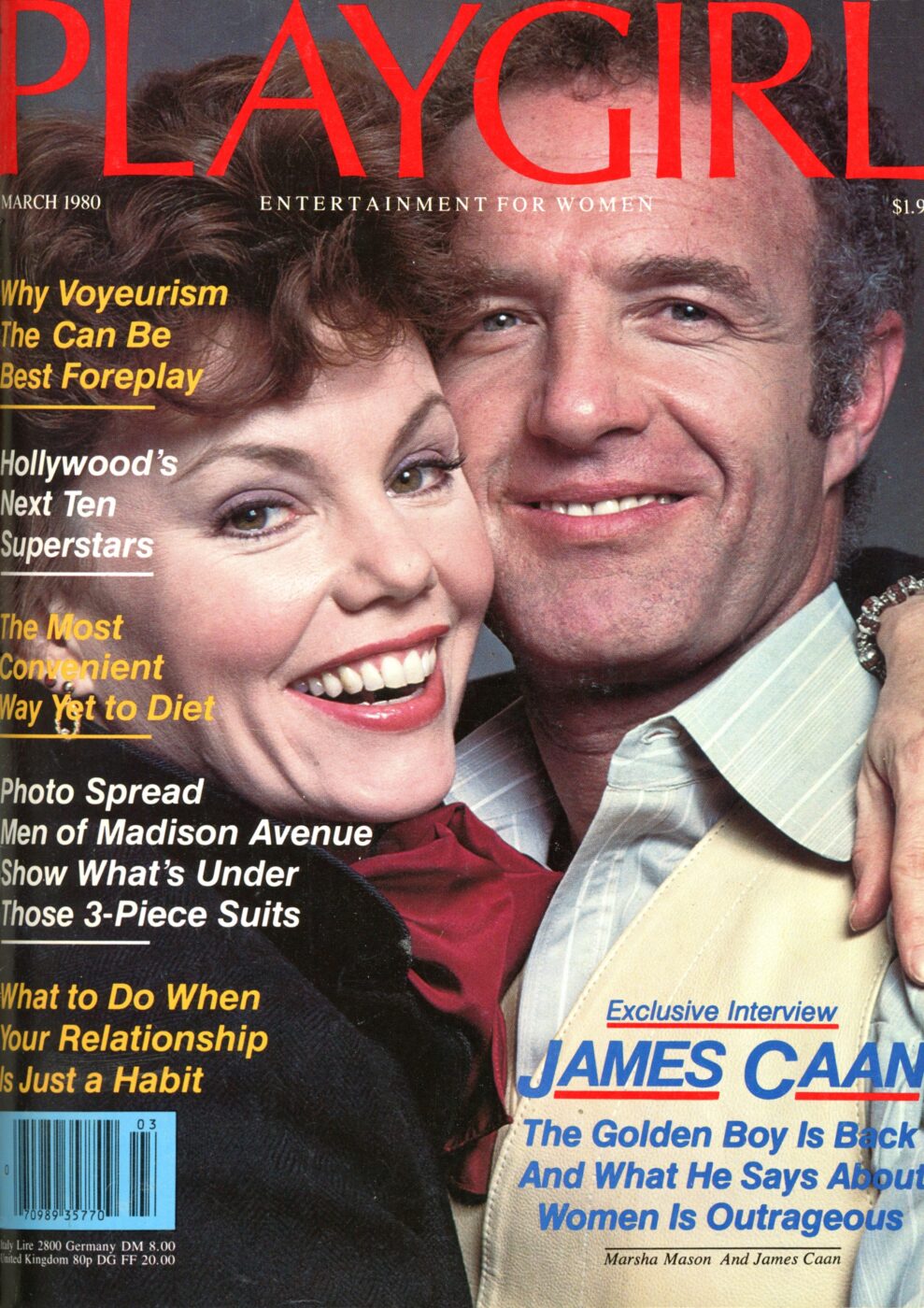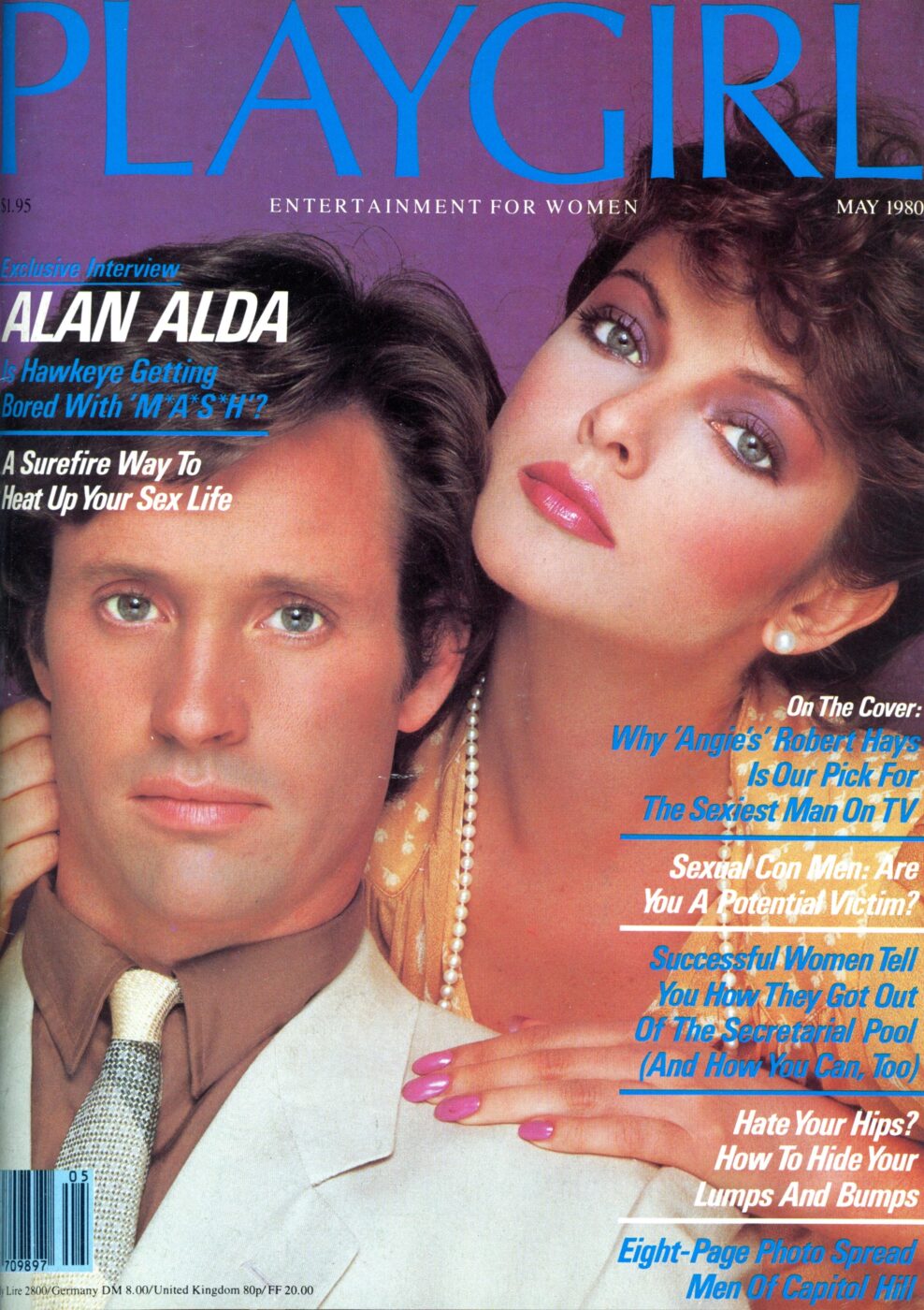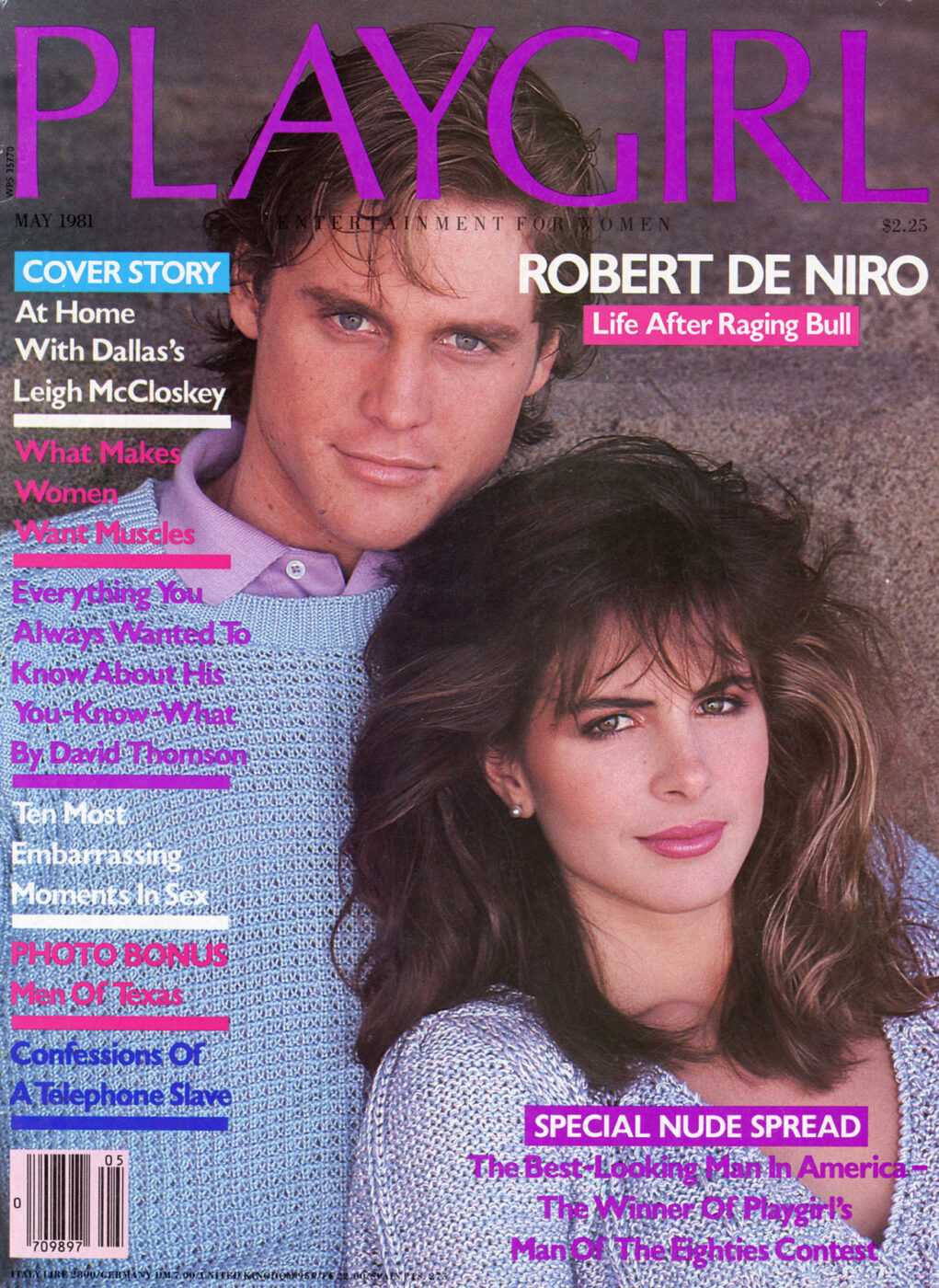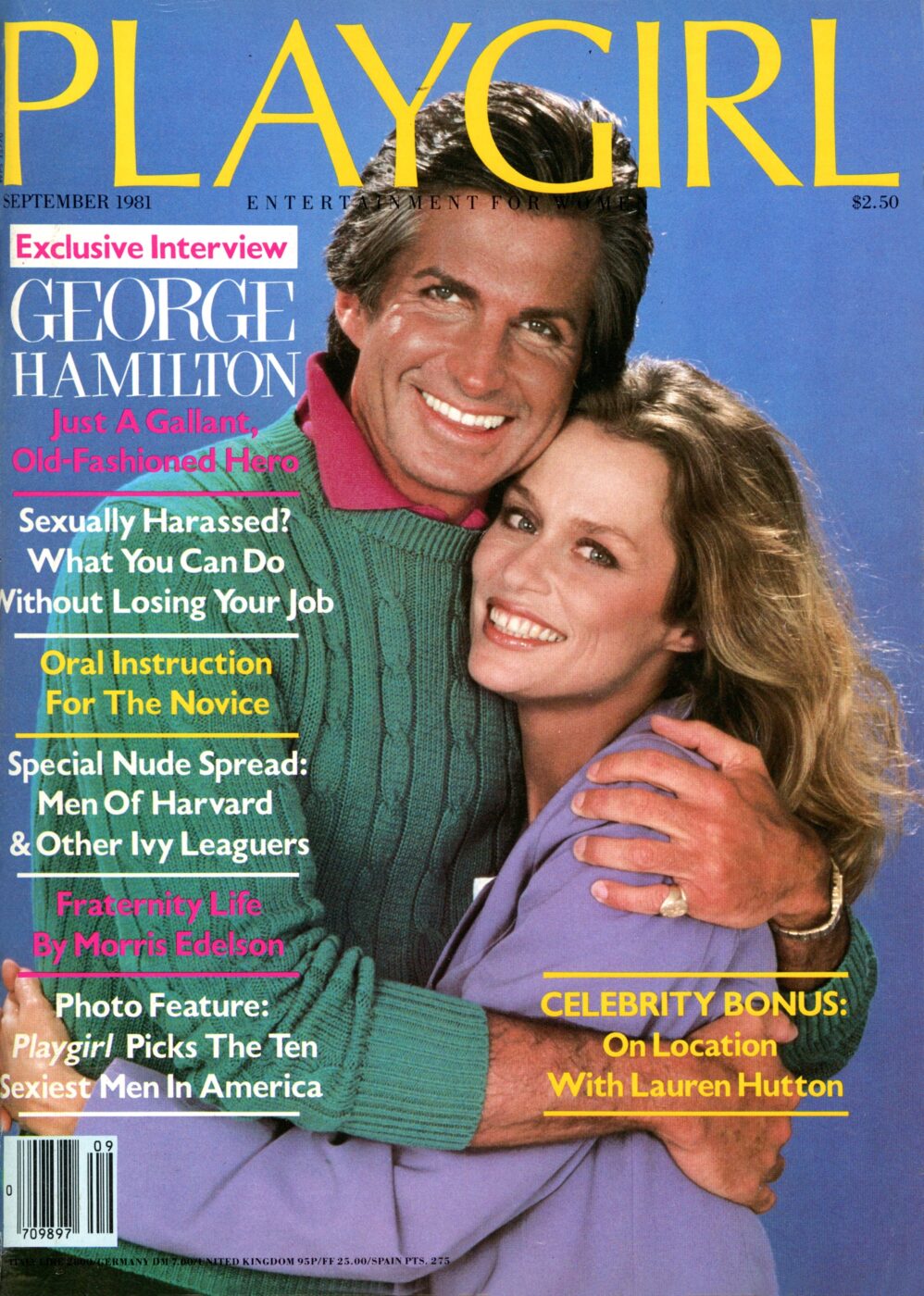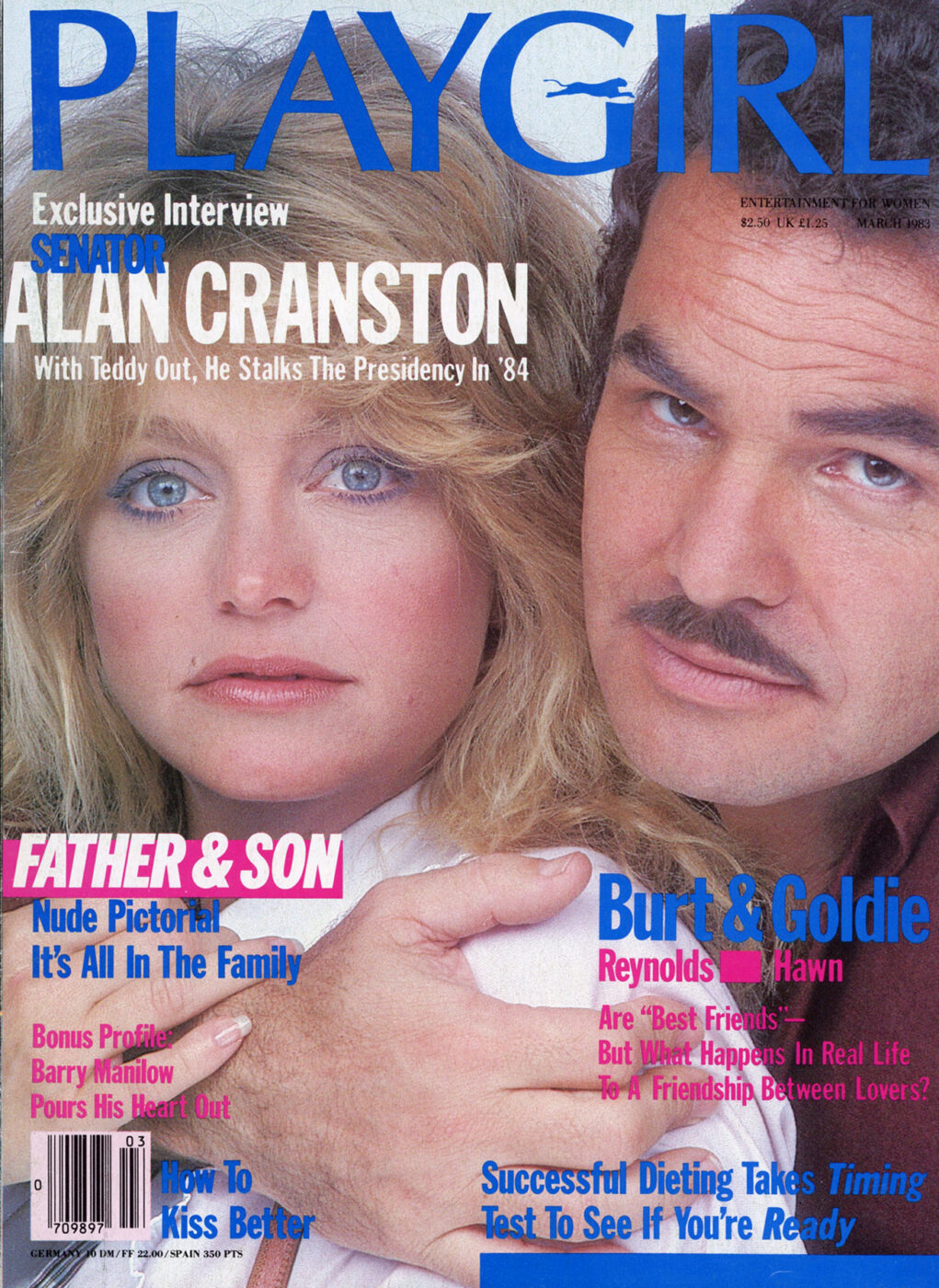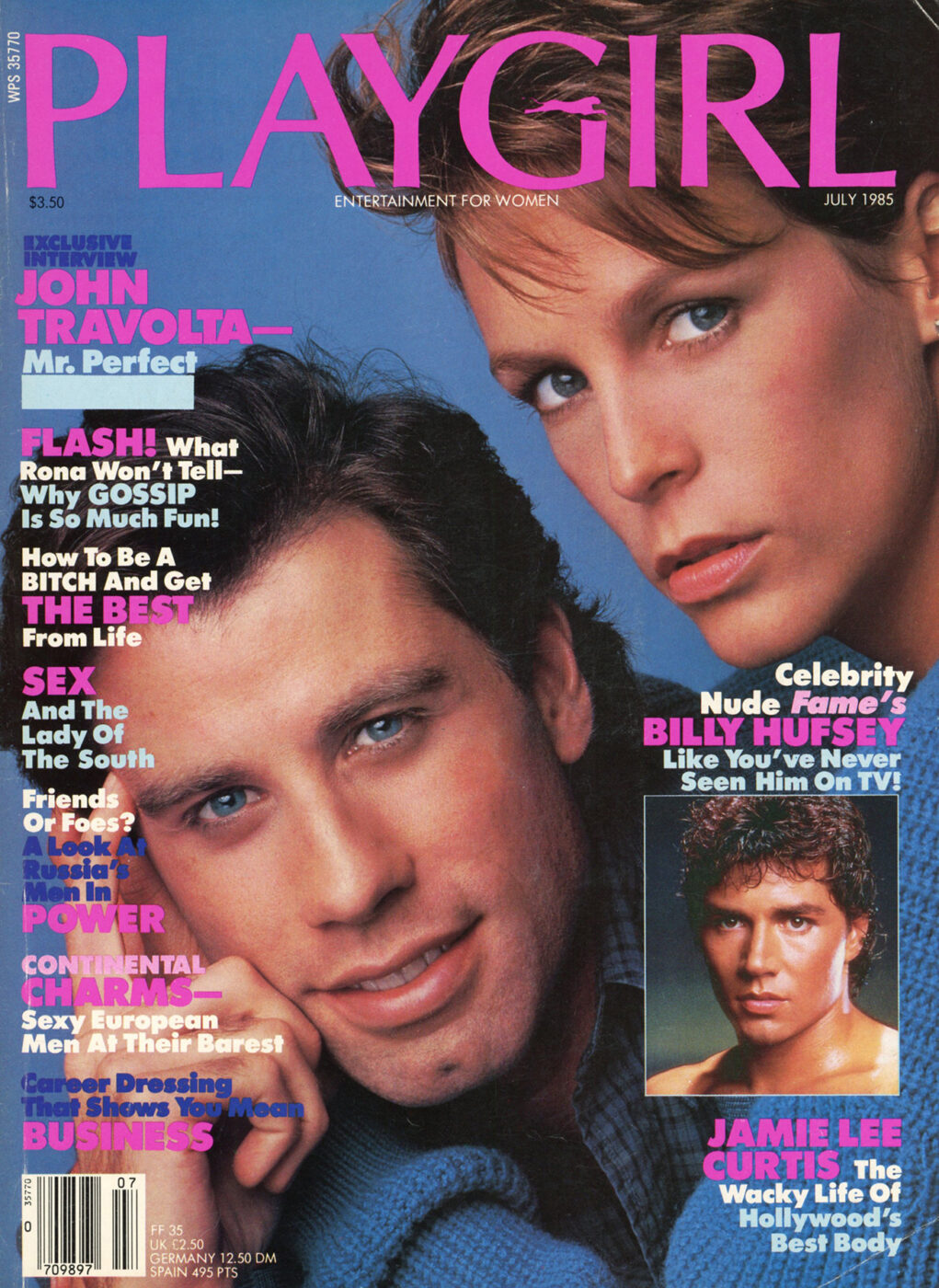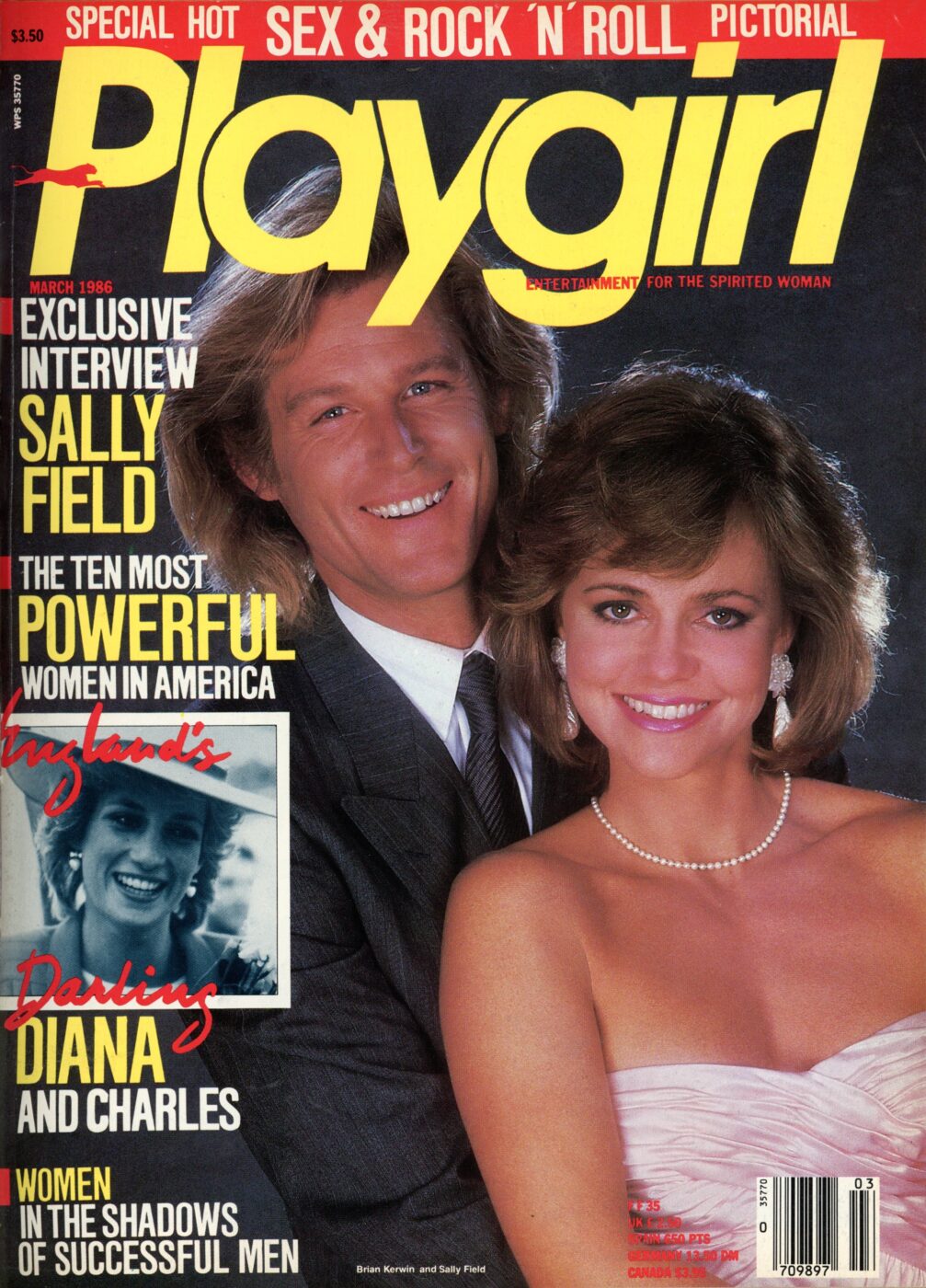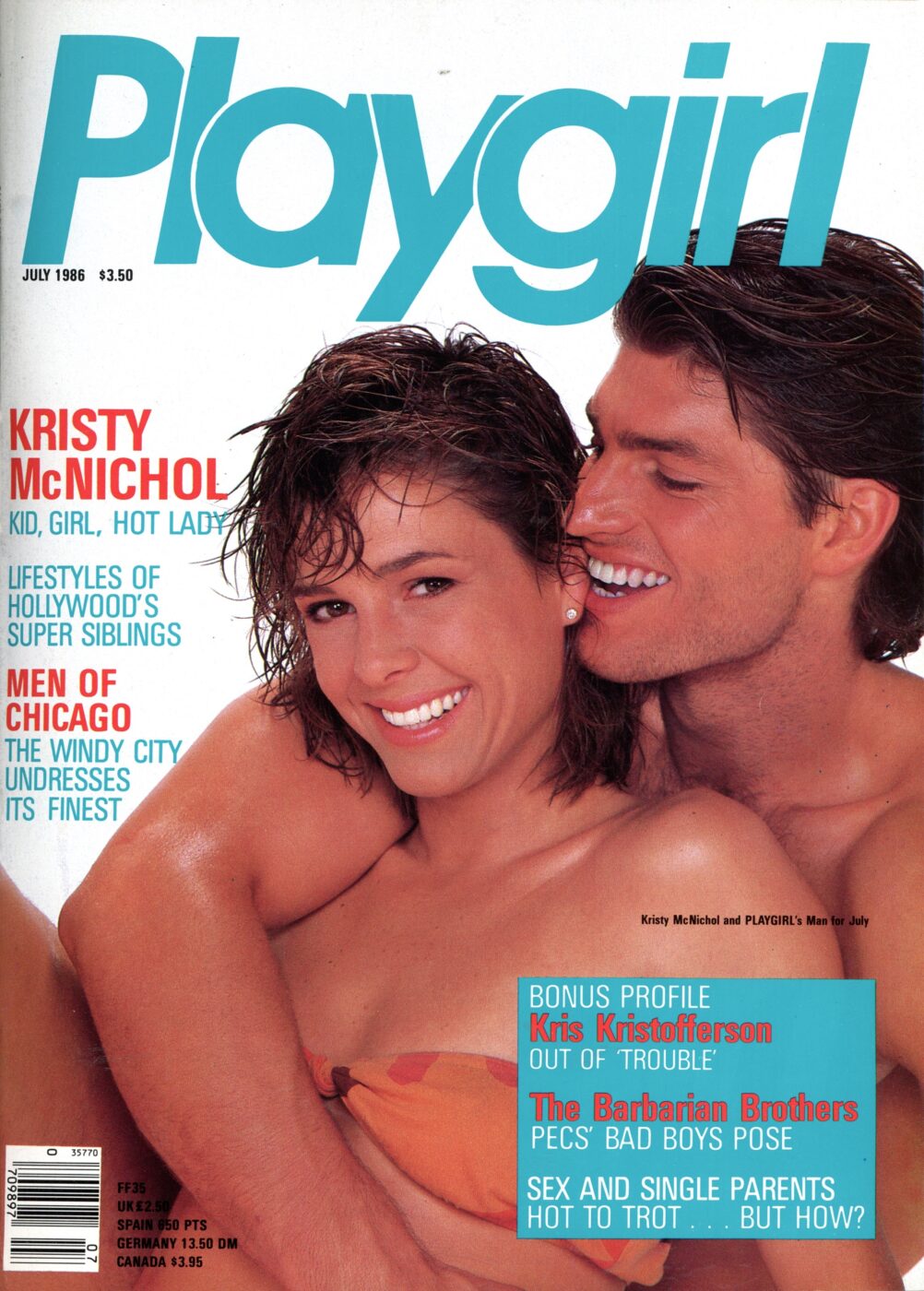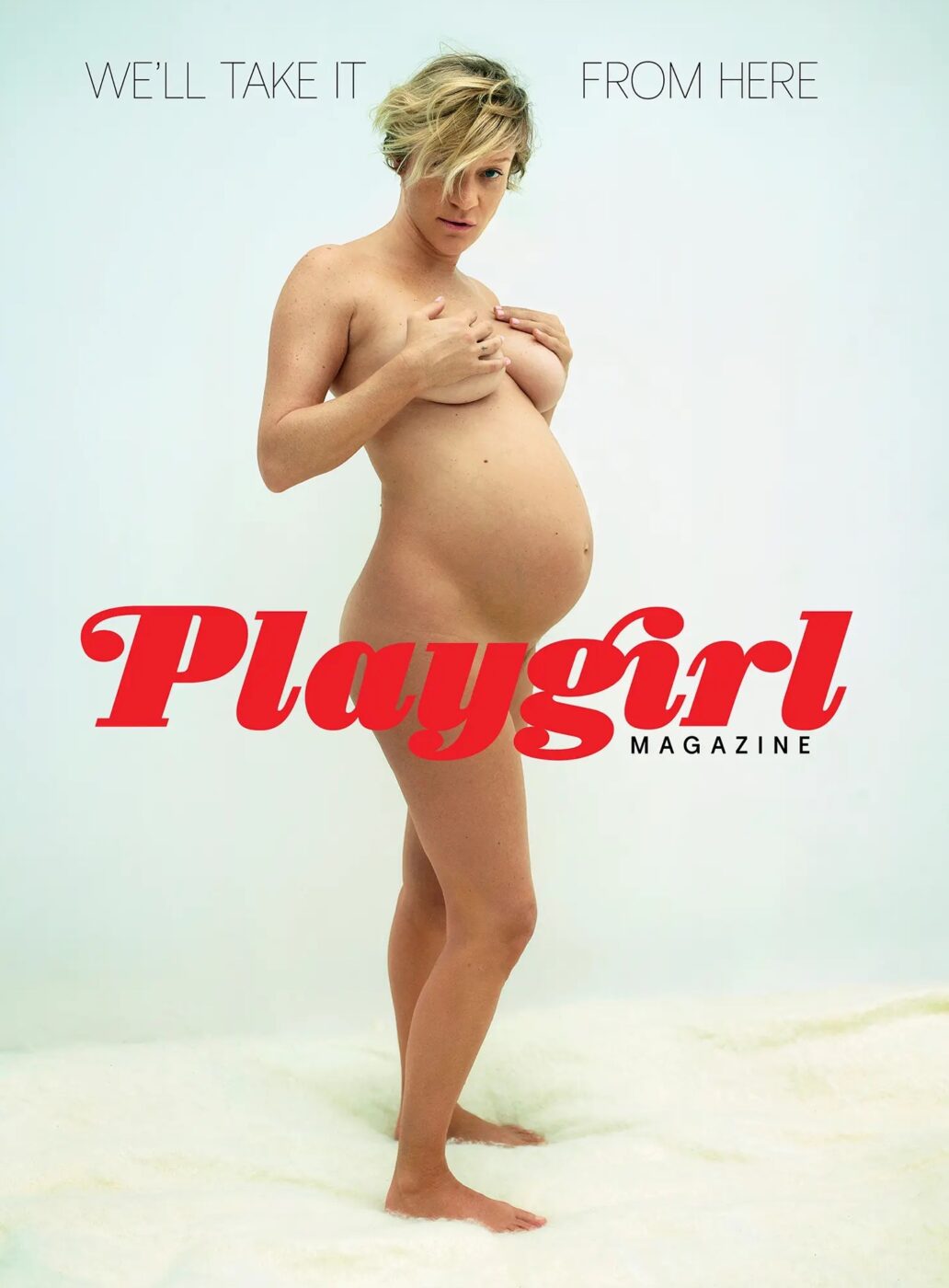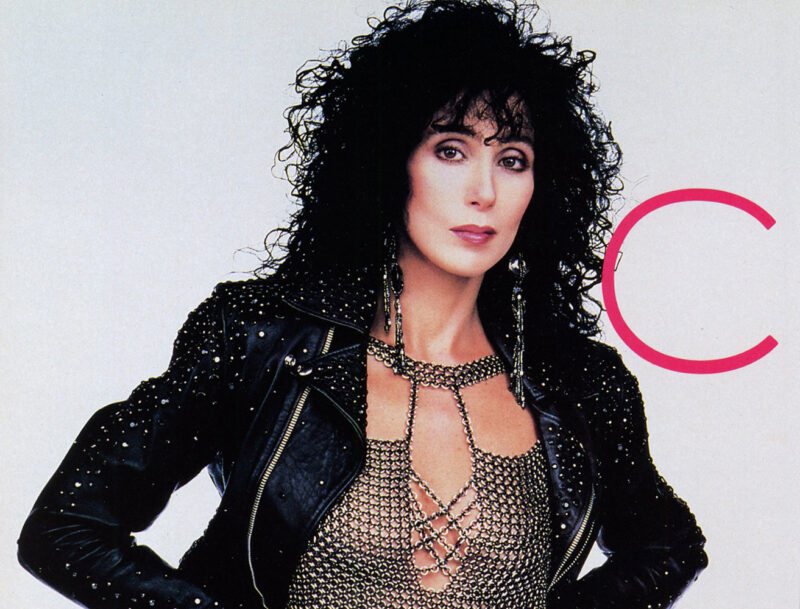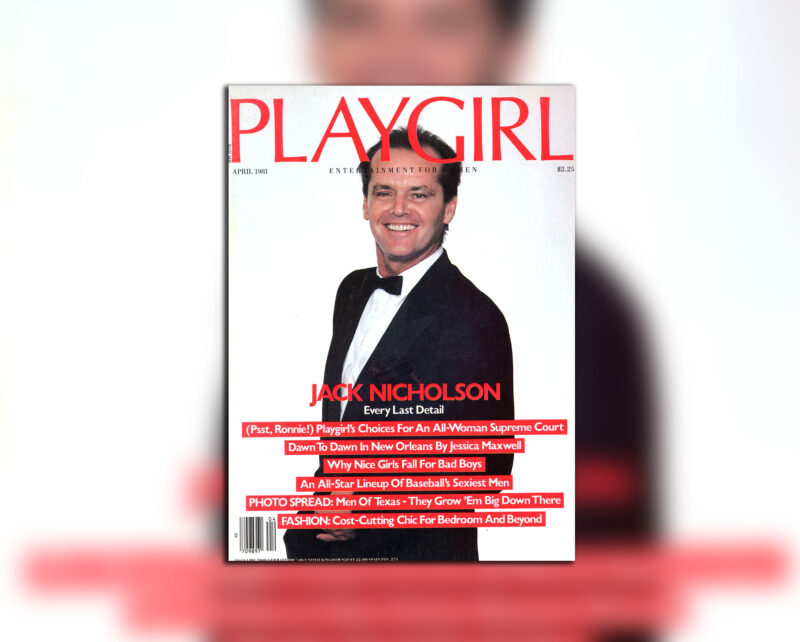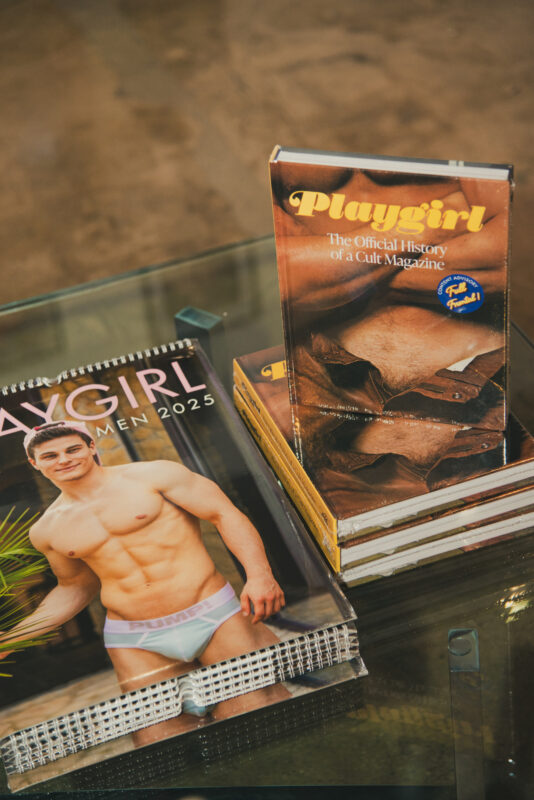Couples are featured on every cover from the inaugural issue in June 1973 through September 1974. When founder Douglas Lambert sold the glossy in 1977, publisher Ira Ritter continued to build on that editorial approach and its mission of female empowerment. Some of Ritter’s covers showed women alone (November 1977, August 1978 and the iconic October 1983 with Linda Evans, “America’s sexiest woman”). But in his quest for mainstream appeal, he paired more and more female celebrities with real-life or acting partners –from Meryl Streep (November 1979) to Liza Minnelli (August 1981) to Lauren Hutton (September 1981). In fact, Sally Field graced Playgirl’s covers a whopping three times (July 1979, January 1983 and March 1986), Jaqueline Bisset twice (October 1981 and May 1985); so did Goldie Hawn (November 1980, March 1983) and Jane Fonda (April 1979, January 1982).
In 1985 women graced seven of the twelve covers; in 1986 five. Then, women all but disappeared: one cover in October 1989, one in May 1990, one in the Summer/Fall of 1992, one in July 1998, February 2001, October 2005. The end. What happened to what had long been branded as “entertainment for women”? Ritter sold his share in 1986, Playgirl filed for bankruptcy court protection and a new owner took over, with a very different agenda and interests in men’s magazines (High Society and Cherie). Playgirl “lost its focus, clarity of message, voice and influence in the modern women’s movement,” writes Lambert in his memoir: actresses made way for strippers and beefcake-style covers; substantive journalism and juicy interviews for tawdry editorials. Another change of ownership in 2020, another incarnation, a new direction, an auspicious tag line (“We’ll take it from here”): after fifteen years, a woman –a pregnant Chloë Sevigny– was back on the cover.

